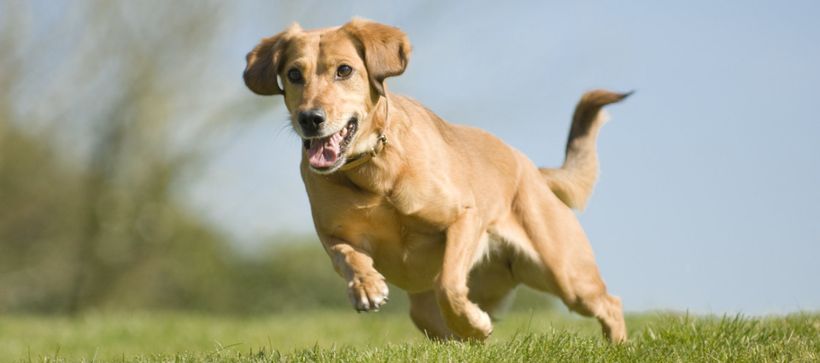Cruciate ligament rupture

Click here for information on repairs
Damage to the cruciate ligament is probably the most common injury that dogs sustain in their back legs.
The ligament itself is one the many ligaments in and around the knee allowing it to both slide, rotate and also allow the bones to slide over each other, but not too far !
It is one of two ligaments within the centre of the knee arranged almost in a 'X' shape, and hence the name. One is the Cranial Cruciate Ligament - at the front, and one is the Caudal Cruciate Ligament towards the back. In the picture on the left, the patellar ligament containing the kneecap is missing to show you where it is.
You may well have encountered this injury in humans, most obviously sports men & women, for example playing football & rugby or skiing.
In humans, an overextended knee which then twists will generally result in the ligament tearing apart.
However, this does not tend to be the case in dogs and I often refer to it as a design fault. We used to consider this an injury that tended to occur in large dogs, and generally when they got older.
However, we now recognise that this injury can occur in any size, any breed, and can affect young dogs. The youngest dog I have seen with this injury was just 5 months of age.
So how do we think this occurs ?
When a dog is standing up, the position of the thigh bone and shin bone relative to each other, along with the shape of the surface of the shin results in forces being direct in the direction of the arrow, a little like a car trying to roll down a hill.
This force must be prevent from literally allowing the thigh bone to fall off the back and a combination of tissues and ligaments perform this function. The Cranial Cruciate Ligament is the key component in performing this function, and would be like the rope holding the car at the top of the hill.
Some of these dogs will very suddenly develop a lameness and hence it appears as though they have ruptured them exercising.
However, this activity is probably coincidental and they could as easily damage the ligament in the living room as chasing a stick in the park.
Other dogs often have a grumbling, mild and variable lameness over some time. Some of these dogs will also have significant arthritic change in their joints like the x-ray on the left where areas of the bone surface look roughened and irregular. It loses its smooth outline.
It is likely that the degeneration of the joint tissues both results and contributes to the deterioration seen in the ligament.
The shape of the surface of the shin bone varies enormously , both from breed to breed, and in individuals, indeed, the shape of a dog's leg on one side might differ to the other !
The lines drawn on these x-rays show this variability. In effect the slope that the thigh bone sits on is much steeper, like a car being held by a rope on a very steep hill. Eventually the rope will weaken.
Gradually the techniques that we have utilised to fix the ligament problem have tried to alter the impact of this slop and then change the direction of the resulting forces, so the tension on the ligament, or tension on the 'rope' is reduced.
Cruciate surgery involving an osteotomy, or bone cutting, techniques, has focused largely on medium to large breed dogs.
However many terrier breeds have quite incredible slopes on the surface of their shin bone.
They often 'get away' with surgery and recover pretty well, but probably never as good as those that do have surgery.
In fact, many of terriers are far worse in terms of their shape than the larger breeds like Labradors.





